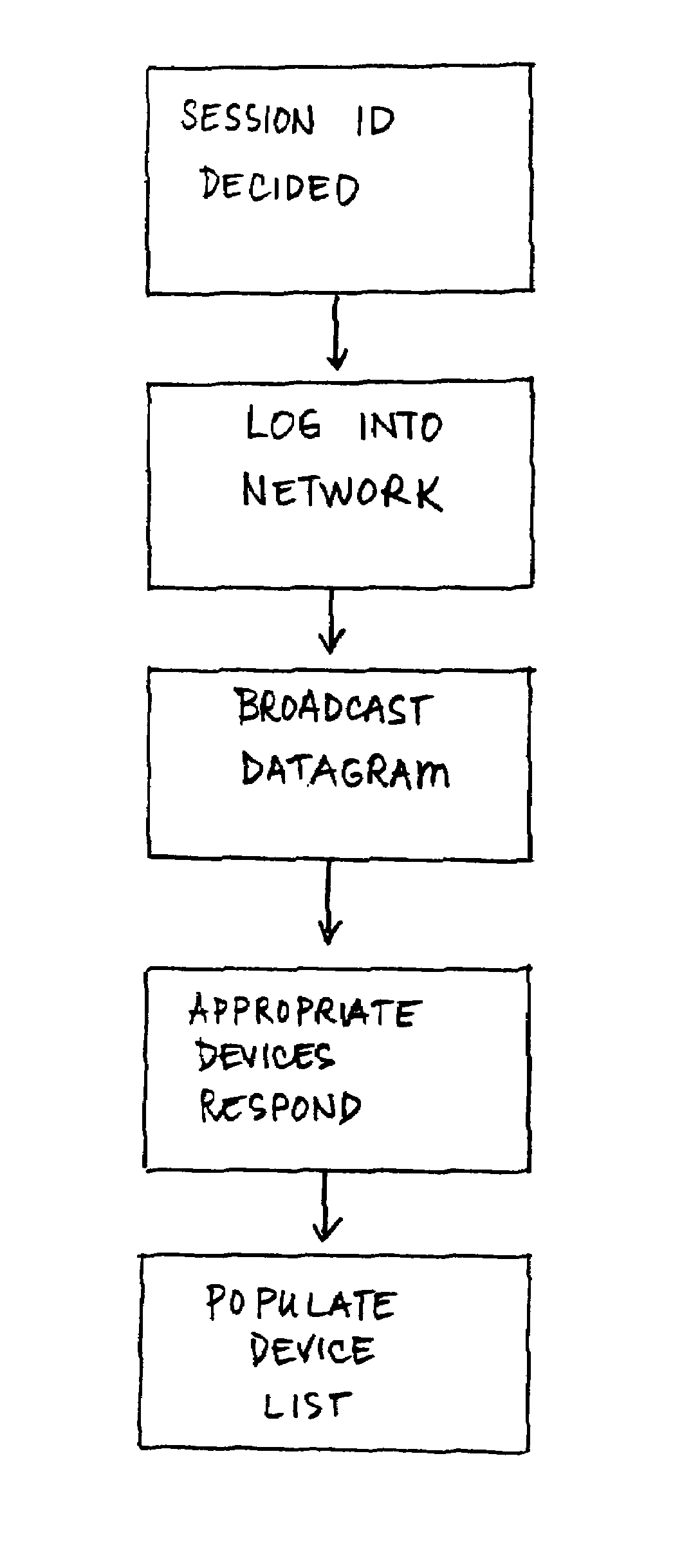Method for discovering and discriminating devices on local collaborative networks to facilitate collaboration among users
a technology of local collaborative networks and discrimination devices, applied in the field of identifying members of a collaborative network, can solve the problems of not being able to quickly and easily contact all members of the collaborative session, not being able to disclose how, and being extremely difficult to maintain an accurate accounting of the participants in the collaborative session
- Summary
- Abstract
- Description
- Claims
- Application Information
AI Technical Summary
Benefits of technology
Problems solved by technology
Method used
Image
Examples
Embodiment Construction
[0022]Referring now to the drawings wherein the showings are for purposes of illustrating a preferred embodiment of the present invention only, and not for purposes of limiting the same, FIG. 1 illustrates computing devices A, B, C, 13, and E in a peer-to-peer network. The computing devices may be PDA's, PC's, wireless telephones, or any other type of electronic device that can be in a network. The network may be wired (i.e, LAN or Ethernet) or wireless network (i.e., Bluetooth, 802.11b). The present invention is independent of the type of the computing device or the type of network.
[0023]Each of the computing devices A, B, C, D, and E has a respective network identification number. For instance, computing device A has a network identification number of 001. The network identification number is a unique identifier to the network. Furthermore, each computing device may also have an associated network address. The address may be an IP address or other type of network specific address....
PUM
 Login to View More
Login to View More Abstract
Description
Claims
Application Information
 Login to View More
Login to View More - R&D
- Intellectual Property
- Life Sciences
- Materials
- Tech Scout
- Unparalleled Data Quality
- Higher Quality Content
- 60% Fewer Hallucinations
Browse by: Latest US Patents, China's latest patents, Technical Efficacy Thesaurus, Application Domain, Technology Topic, Popular Technical Reports.
© 2025 PatSnap. All rights reserved.Legal|Privacy policy|Modern Slavery Act Transparency Statement|Sitemap|About US| Contact US: help@patsnap.com



